With all the Covid travel restrictions in 2020 and 2021 it is great to have a place like Mamit Lake (also spelled Mamette) near our home (12 km drive), where we can explore and enjoy nature. The lake levels have been very high all through the spring and early summer in 2021, which means fewer mudflats to attract shorebirds. But we were pleasantly surprised on July 14th when paddling our little kayaks on the lake and up Guichon Creek north of the lake to discover some small mudflats and already a few interesting shorebirds. Plus, this is the time of year when the waterfowl breeding is in full swing with numerous broods of ducklings and goslings. Mamit Lake is an important nursery area for many species.
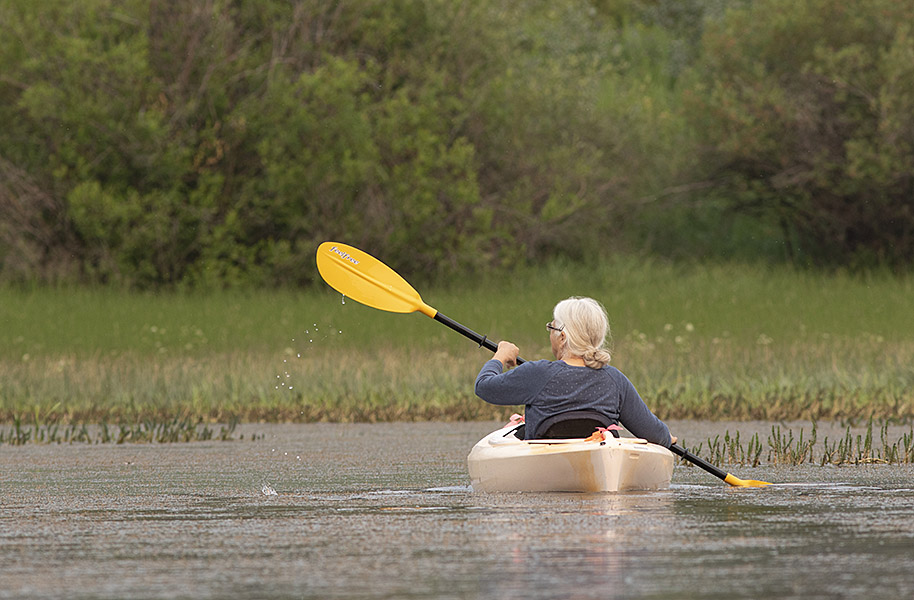
Kayaking on the edges of Mamit Lake, 14th July 2021. Normally there would be mudflats in this area but the high water level this summer has flooded into the lakeside vegetation.
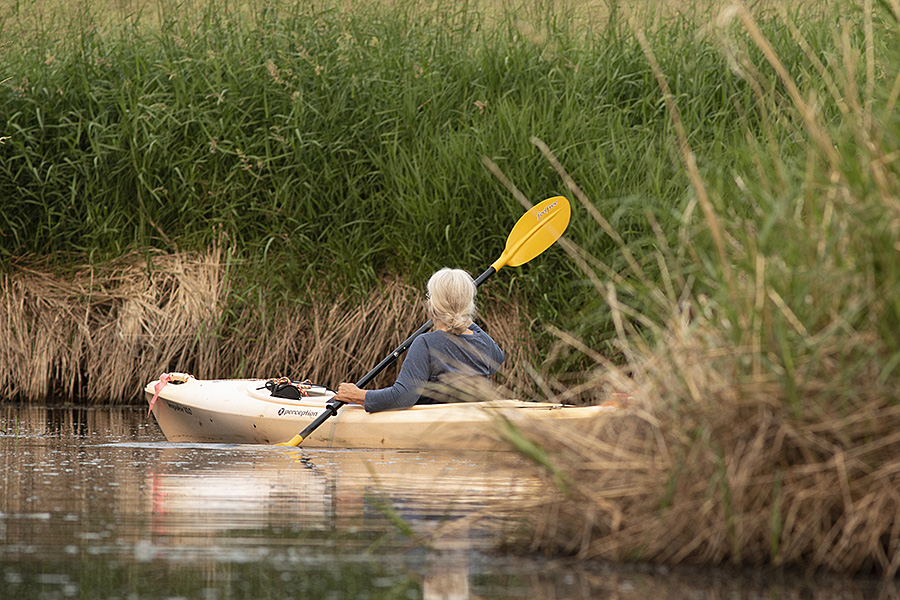
Exploring Guichon Creek north of Mamit Lake. The creek here runs through a narrow channel (3-5 m wide). Fun to explore as the creek snakes through the tall grass and shrubs.
In June and early July the birding interest is primarily the local breeders. And there are many species that breed here – mainly waterfowl. Here are a few.
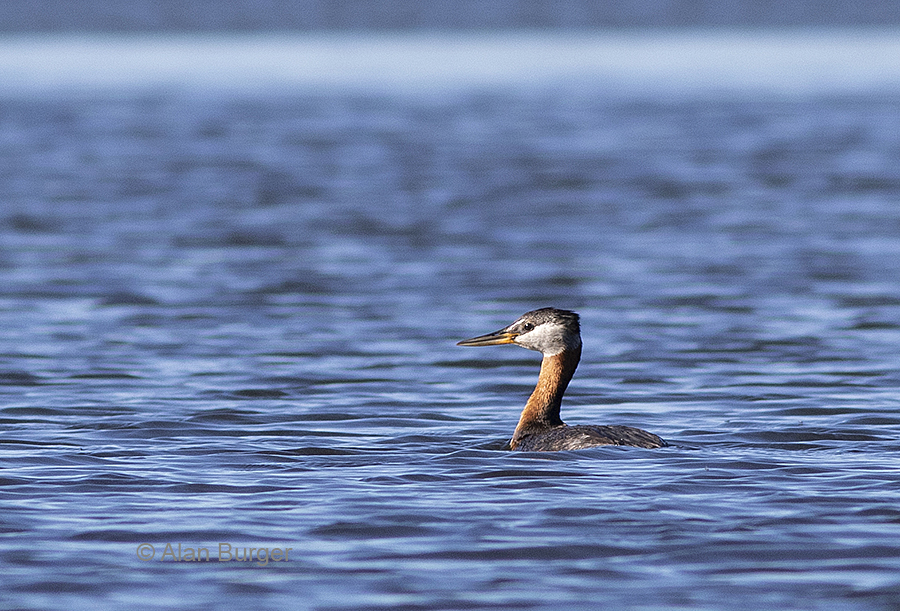
A Red-necked Grebe in breeding plumage. Mamit Lake, 25 June 2021. Photo: © Alan Burger
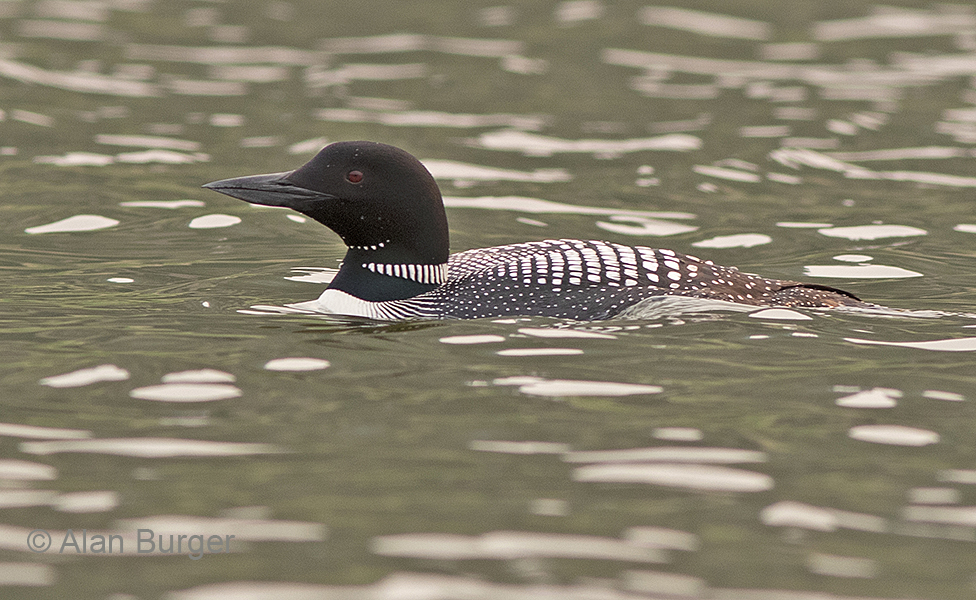
Common Loon. There are two pairs that likely breed on Mamit Lake, although in 2021 we haven’t seen any chicks on the water yet. 14 July 2021. Photo: © Alan Burger
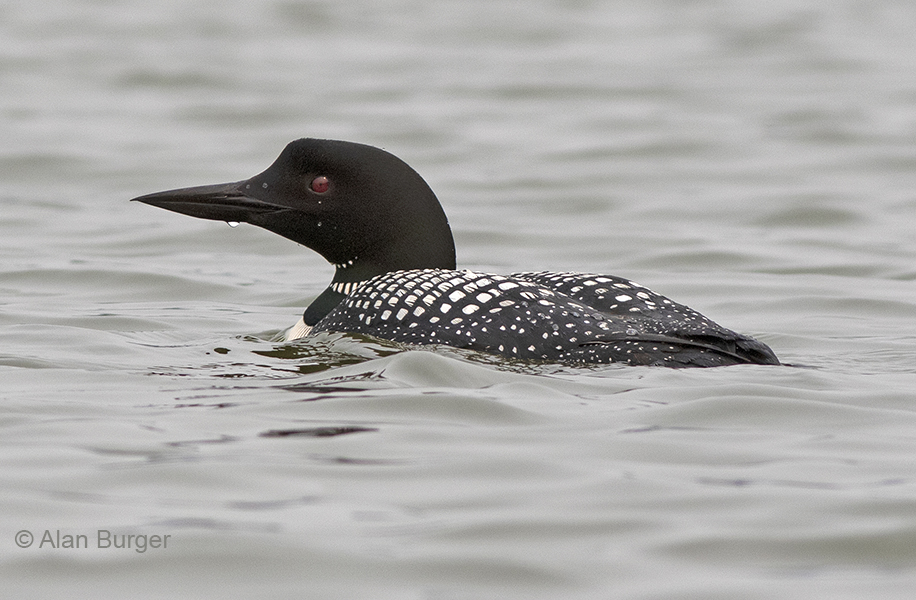
Another Common Loon on Mamit Lake, 14
Several pairs of Barrow’s Goldeneye breed on the lake. By mid-June the males have all departed for their moulting grounds, leaving the females and the ducklings.
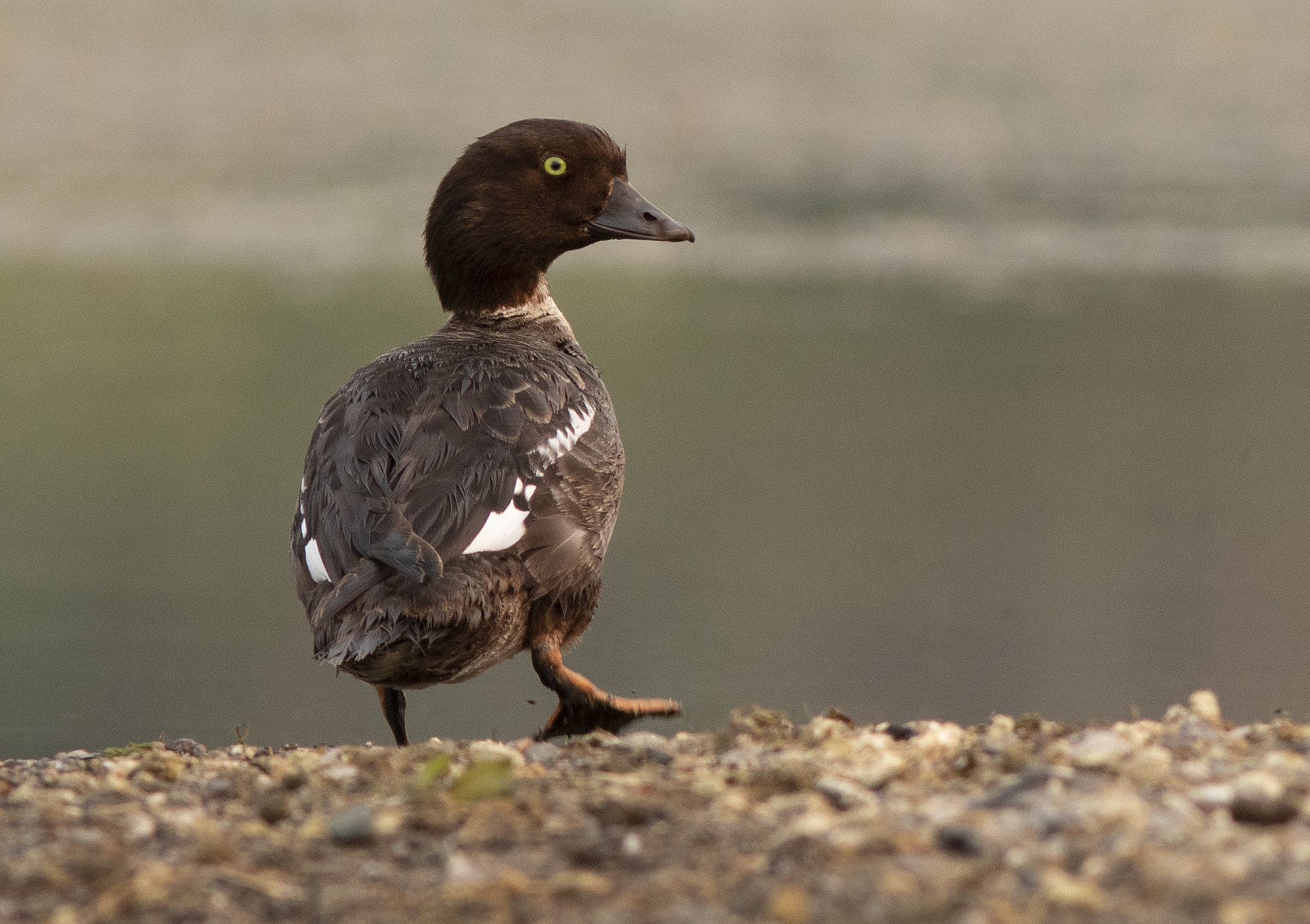
A female Barrow’s Goldeneye. Mamit Lake, 14 July 2021. Photo: © Alan Burger
One of the unusual features of Goldeneyes is that the females tend to be aggressive towards other ducks and especially other Goldeneyes. When there is an encounter between two females, each with a brood of ducklings, this can lead to prolonged chasing – both above and below the water surface. This often ends up with the winning female making off with both broods of ducklings. The normal clutch size for Barrow’s Goldeneye is 9-10 eggs, which don’t all necessarily hatch, but one can often find females with 15, 20 or more ducklings in tow. These would be the winners of female-female conflicts.
Is there an advantage to a female in accumulating someone else’s ducklings? Since the ducklings feed themselves from the day of hatching there is no added cost to the female, and having other ducklings around might dilute the chances of her own ducklings being the ones taken by a Bald Eagle.
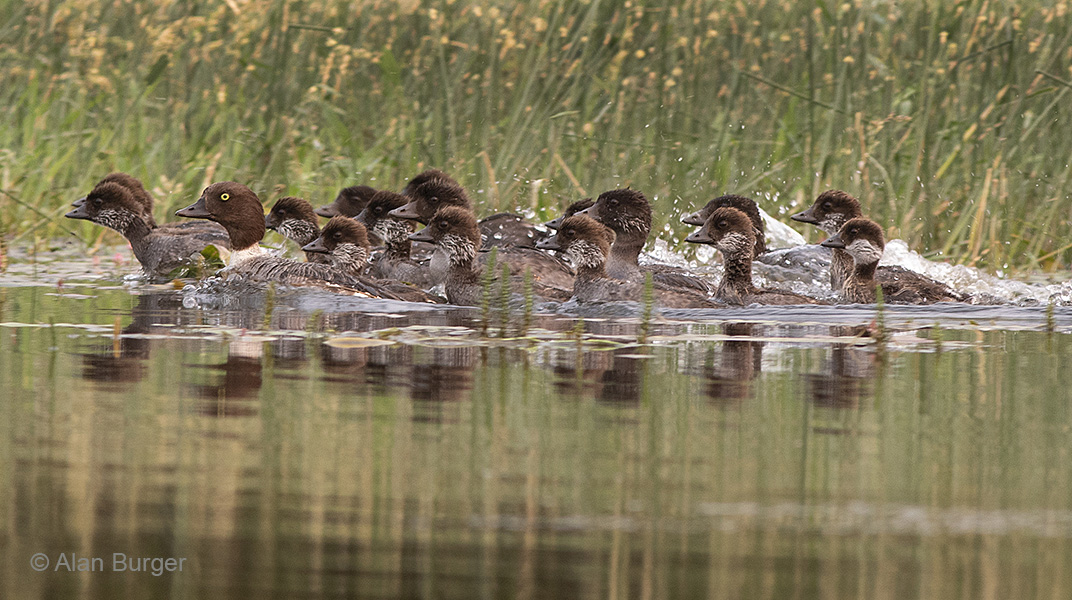
A female Barrow’s Goldeneye with 16 ducklings. Look closely and you can see that some ducklings are larger than others – the result of this female stealing ducklings of a slightly different age from another female. 14 July 2021. Photo: © Alan Burger
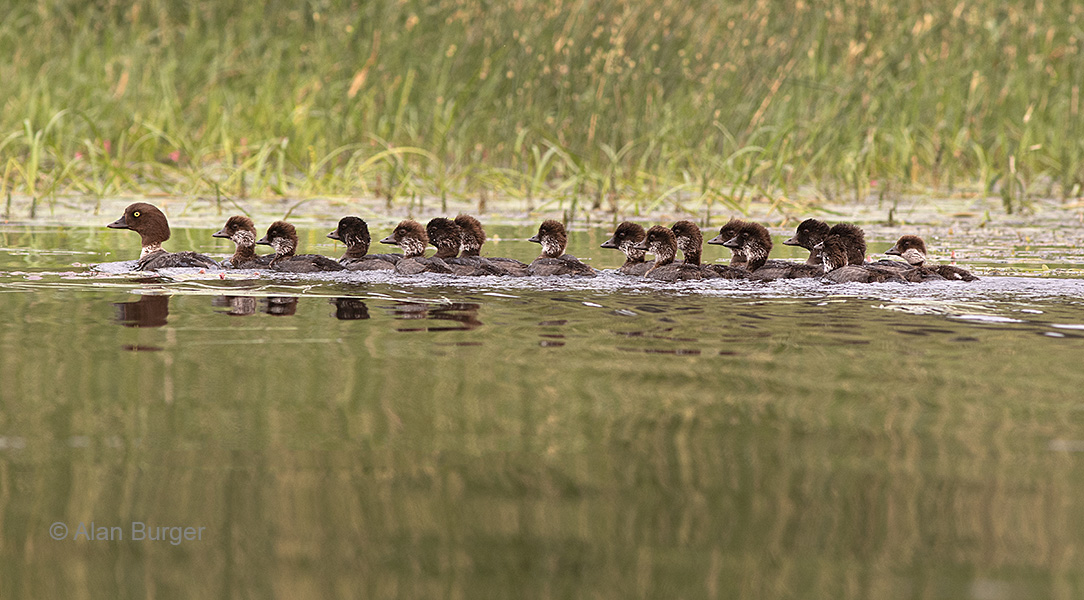
The same group in a more relaxed mode. Photo: © Alan Burger
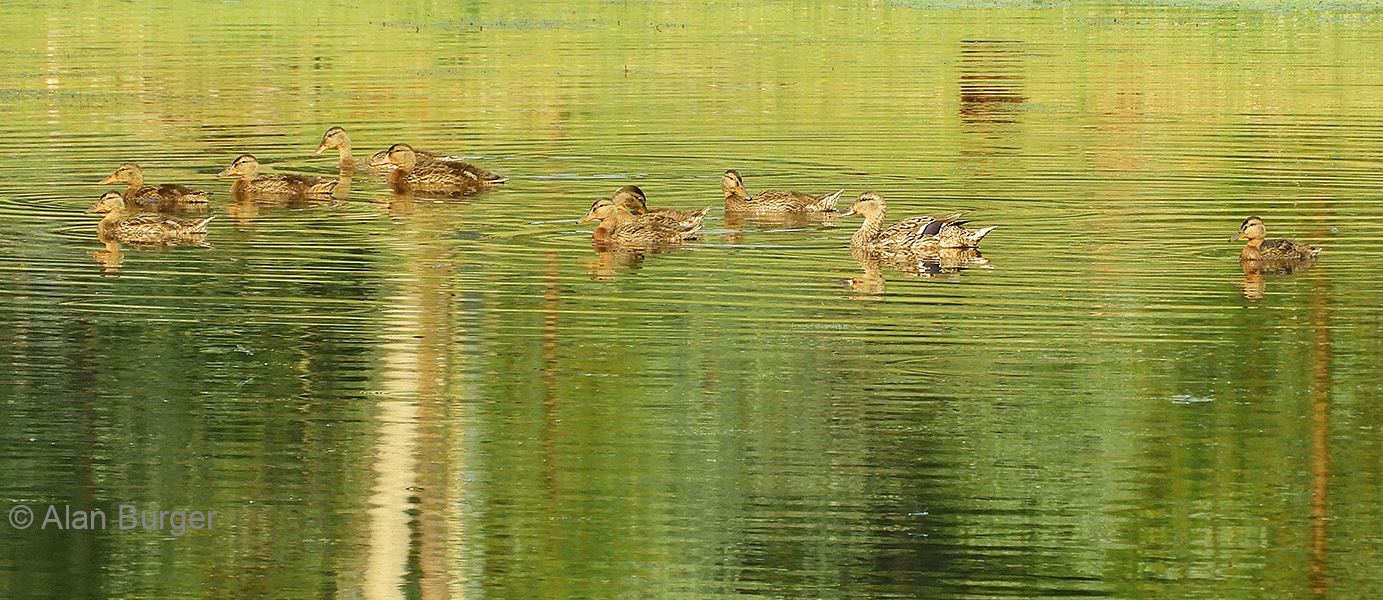
A Mallard female with her large ducklings. Photo: © Alan Burger
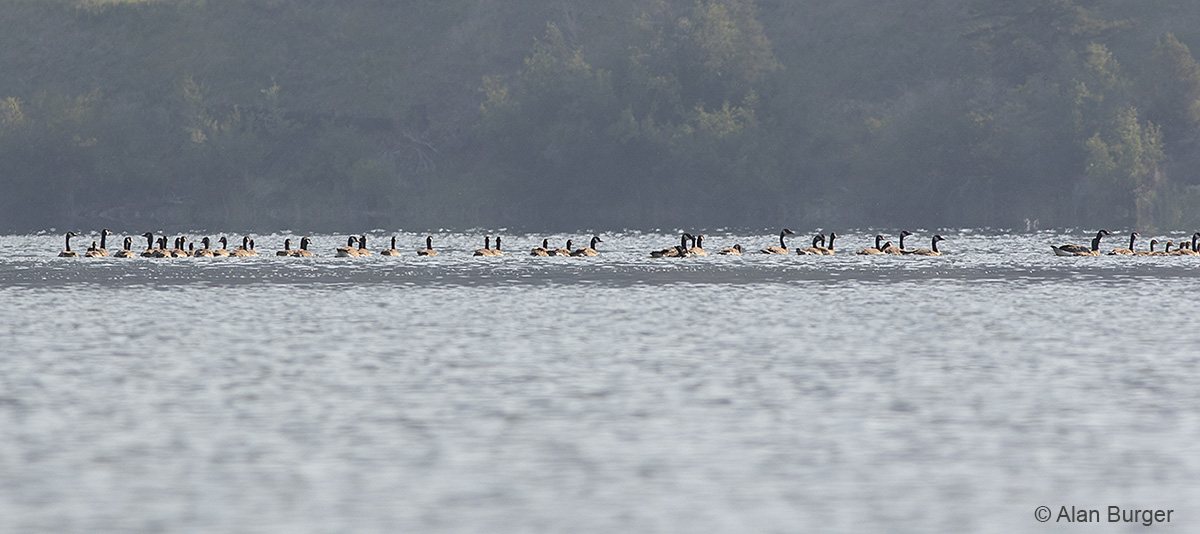
Part of a large flock of Canada Geese on Mamit Lake, including many almost fully-grown goslings. 19 July 2021. Photo: © Alan Burger
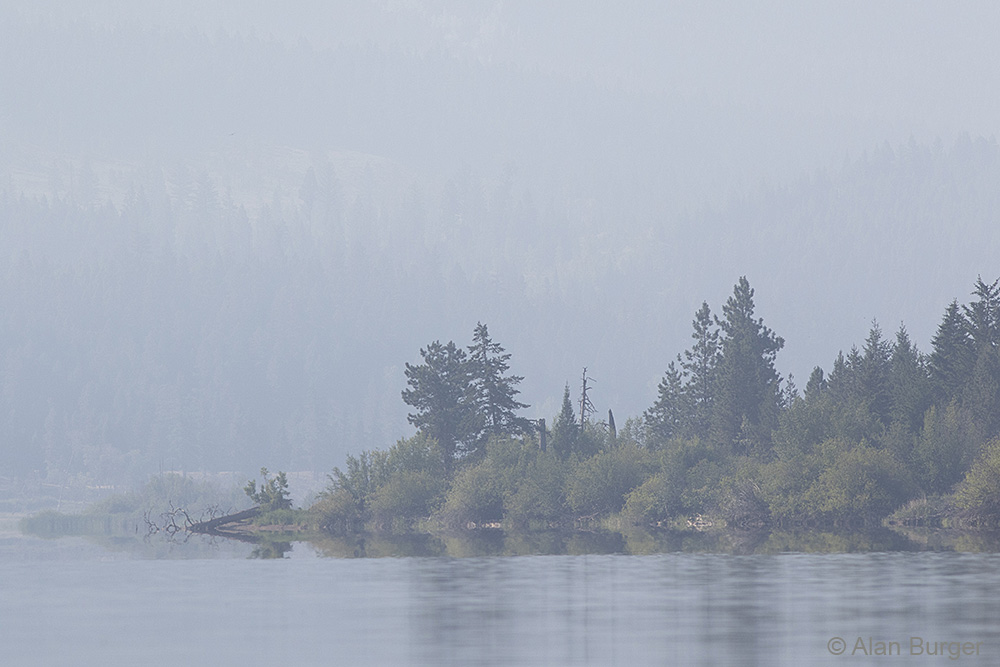
With numerous large wildfires burning, the summer air of 2021 has been smoke-filled and often quite nasty. Here is a smoky view of Mamit Lake, early morning on 19 July. Photo: © Alan Burger
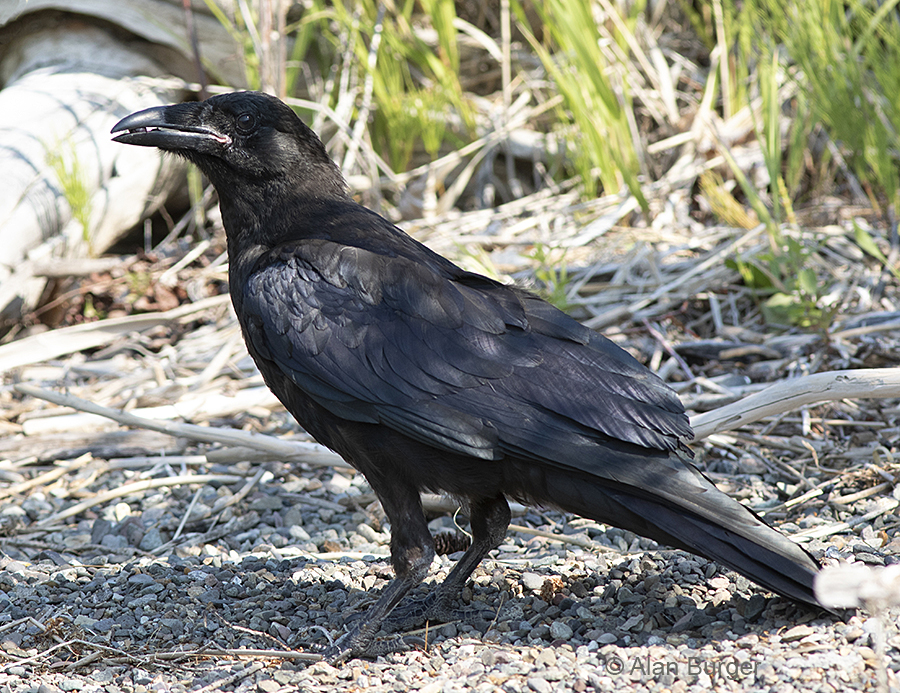
This Common Raven was one of a family that were eating Saskatoon berries along the lake shoreline. The pinkish gape (inner edge of the mouth) shows that this is a newly-fledged juvenile. 19 July. Photo: © Alan Burger
With lots of nutrient run-off from adjacent hayfields and ranches, Mamit Lake is thick with algae and emergent weeds. This provides good breeding grounds for aquatic invertebrates, like mayflies. This in turn provides rich feeding for fish and, up the food chain, fishing birds like grebes, Osprey and Bald Eagles. The lake is also very popular with human anglers.
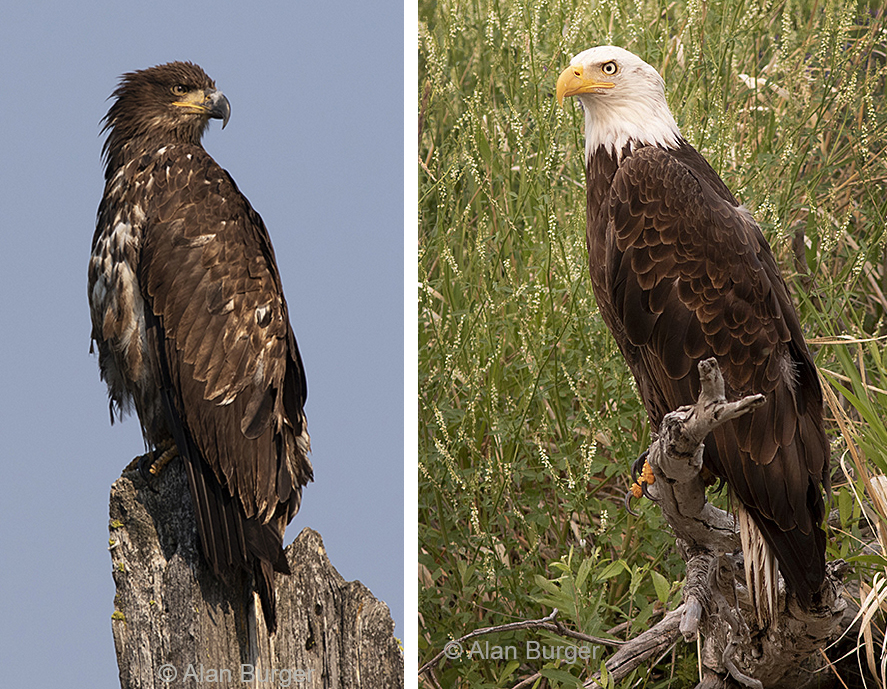
Bald Eagles gather around the lake to hunt the trout, burbot and other fish in the lake. Here are an immature (left) and an adult (right). On 19 July I counted 18 Bald Eagles on my paddle around the lake. Photo: © Alan Burger
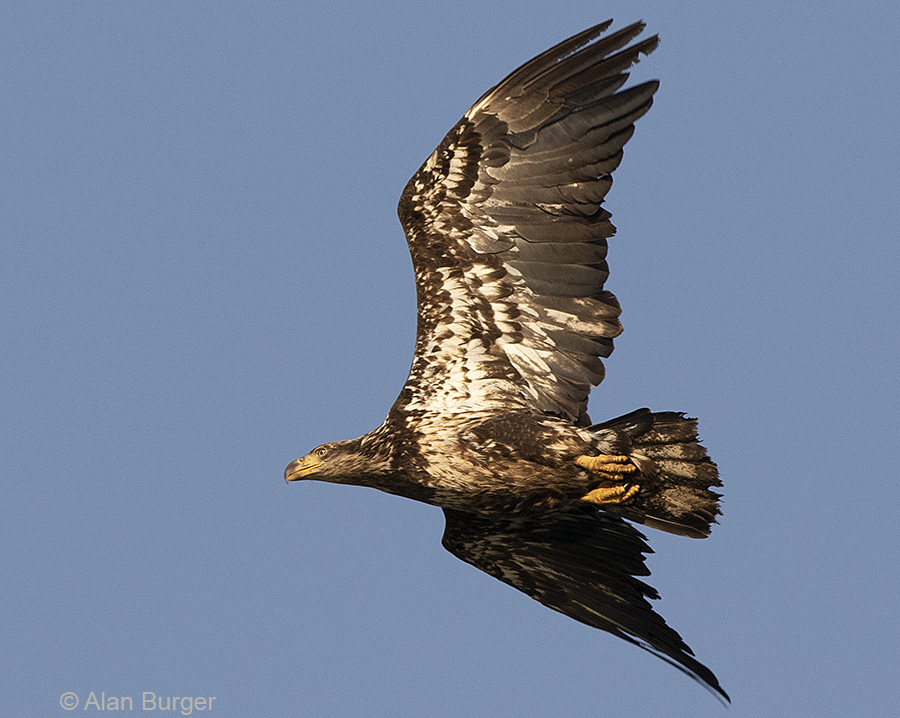
An immature Bald Eagle powering by. Photo: © Alan Burger
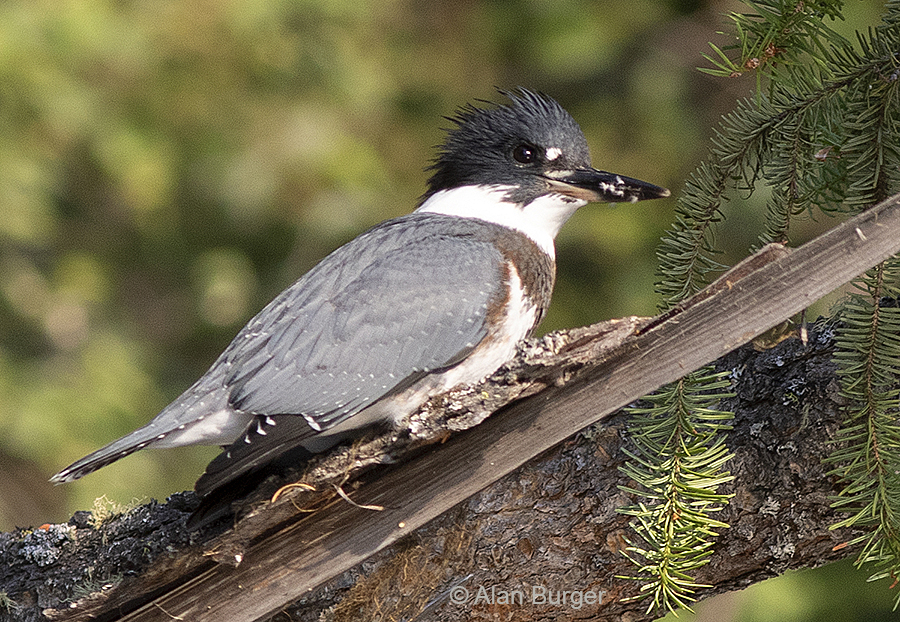
Belted Kingfishers focus on smaller fry than the eagles. A pair breeds at Mamit Lake, nesting in a burrow dug into one of the steep sandbanks. This appears to be a newly-fledged juvenile with immaculate feathers and an incomplete breast band. Photo: © Alan Burger
As summer advances, shorebirds become a major birding feature of this lake. There are only three shorebird species that breed here – Spotted Sandpiper, Killdeer and, in the wet grasslands adjacent to the lake, Wilson’s Snipe. But many species stop over on their southward migration from distant breeding grounds. Each visit we make to the lake produces a differing set of sandpipers and their relatives.
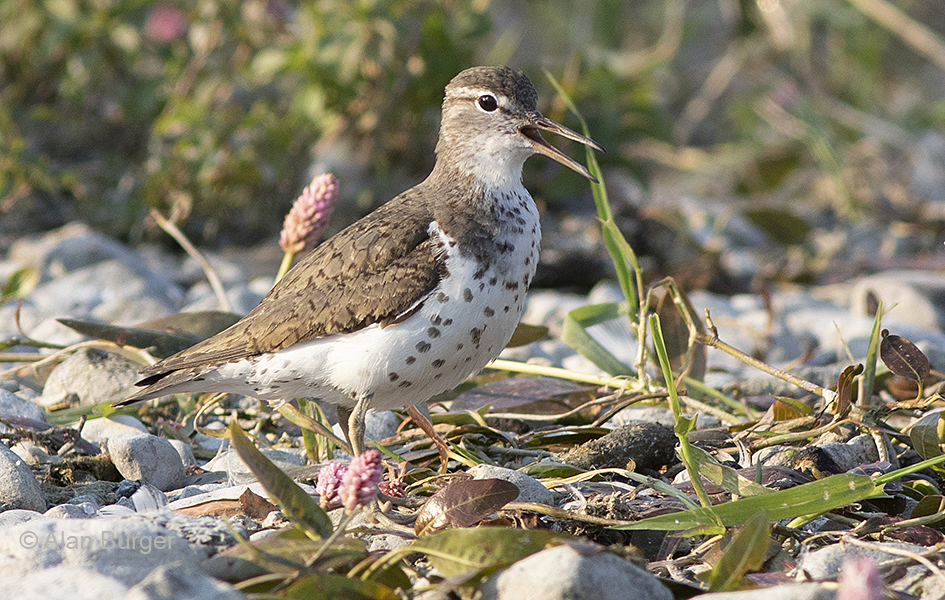
An adult Spotted Sandpiper. This bird is agitated – probably because it has a chick or two hiding nearby. 19 July. Photo: © Alan Burger
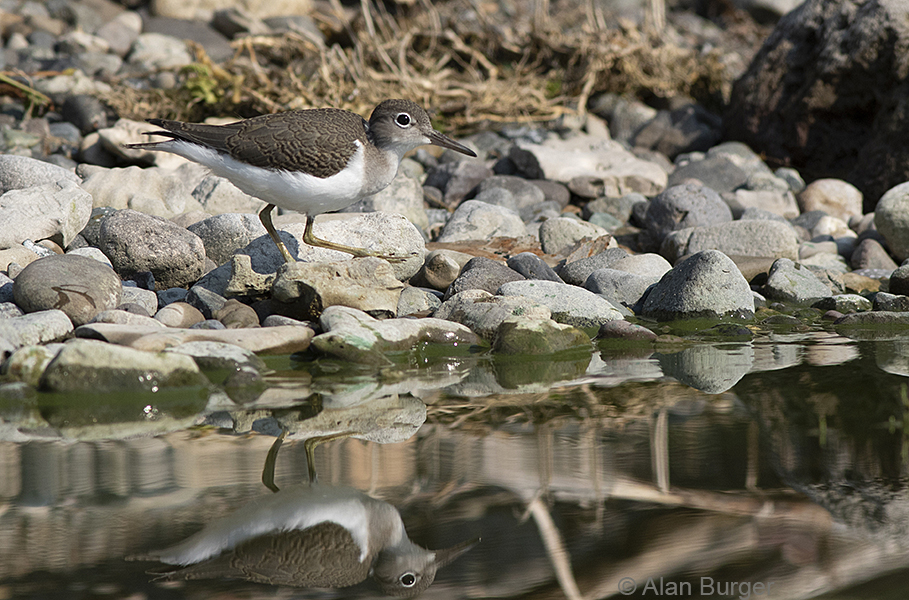
This newly-fledged Spotted Sandpiper was able to fly but was still staying with its parents on their shoreline territory. 19 July. Photo: © Alan Burger
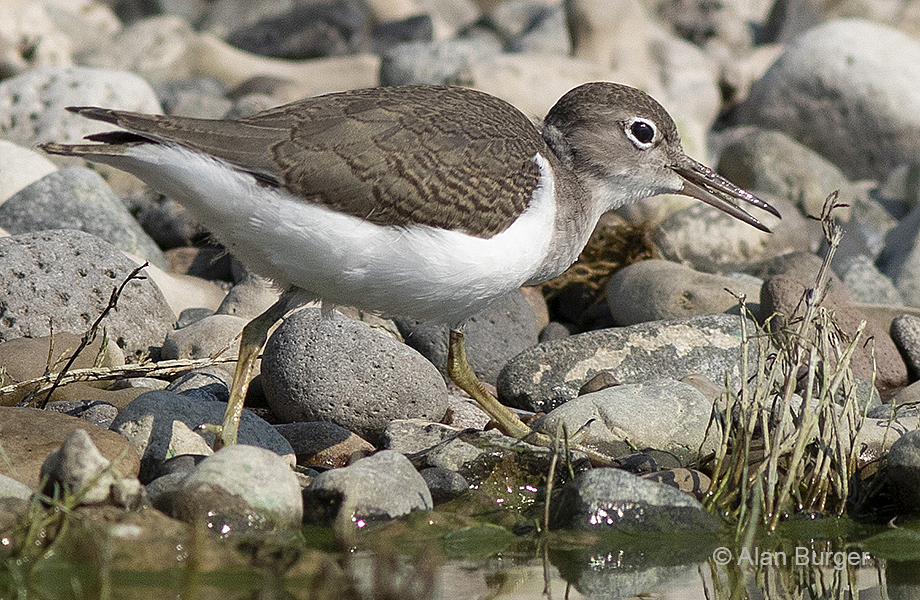
Here’s a closer look at the juvenile Spotted Sandpiper. 19 July. Photo: © Alan Burger
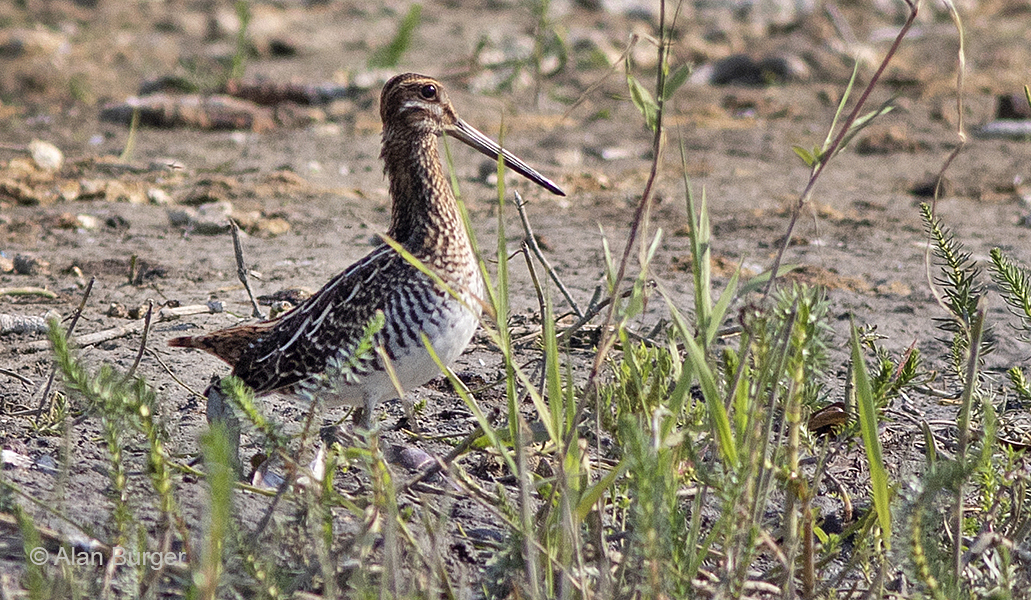
Wilson’s Snipe live in the marshy areas around the lake. Except when they are displaying at the start of the season, snipe tend to be quite secretive and flush easily, so I was lucky to catch this one sitting on a mudbank. 19 July. Photo: © Alan Burger
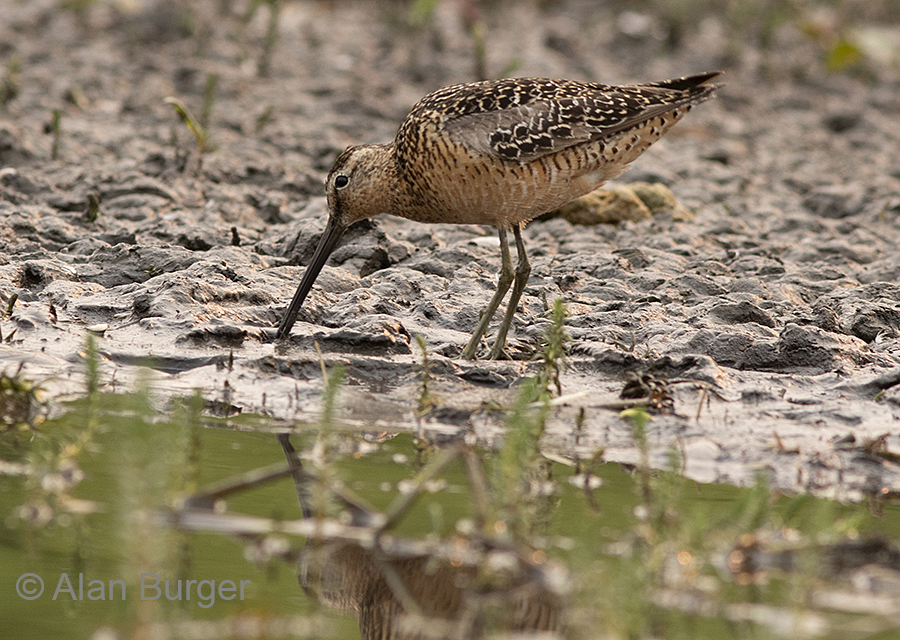
Here’s a bill to rival that of the snipe – a Long-billed Dowitcher. This bird is still in its breeding plumage, but is already a long way from its arctic tundra breeding grounds. 14 July. Photo: © Alan Burger
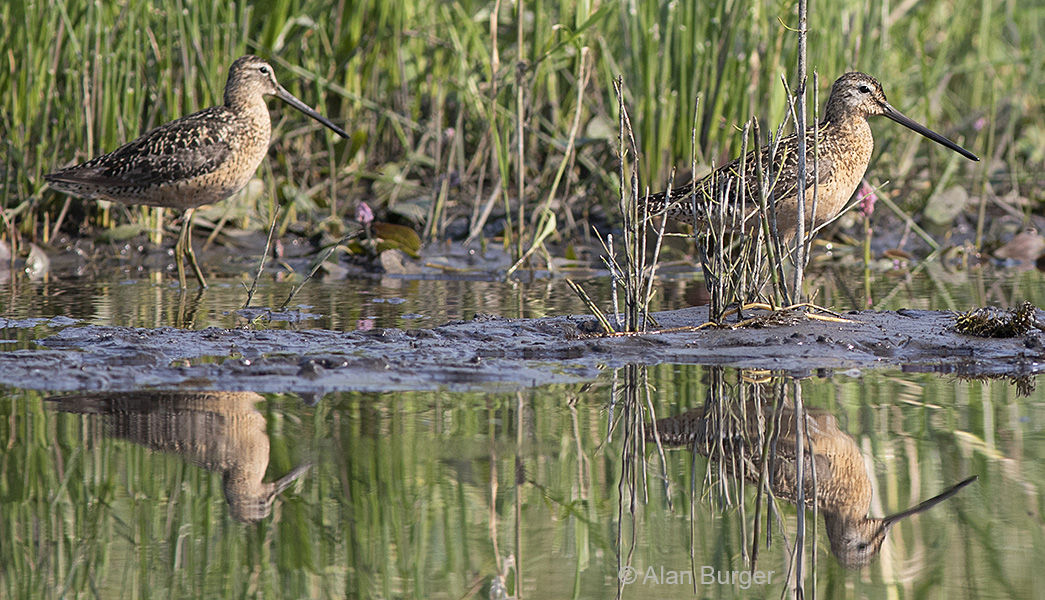
On 19 July there were 11 Long-billed Dowitchers at Mamit Lake. Here are two of that flock. Photo: © Alan Burger
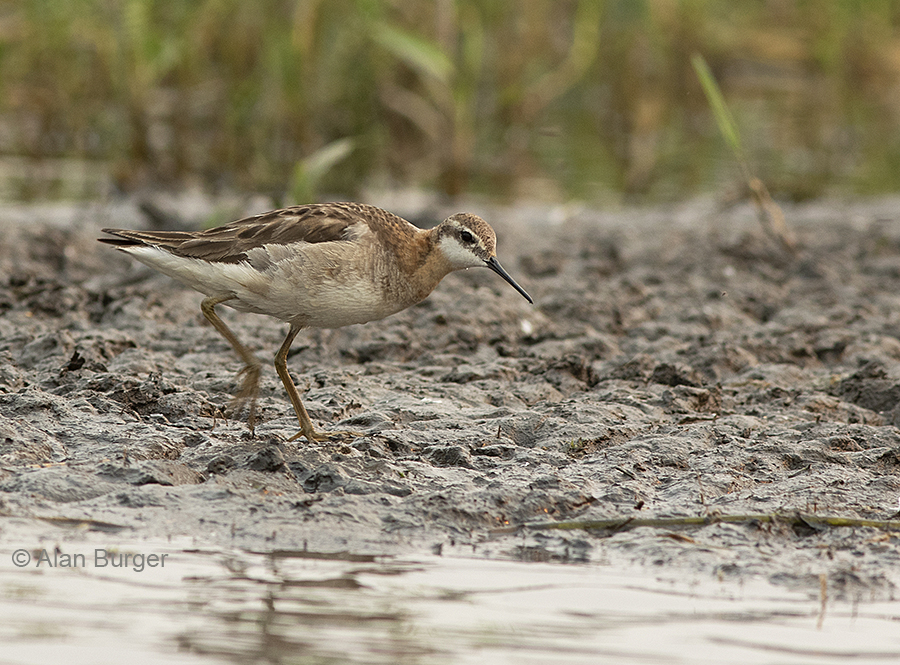
Wilson’s Phalarope breed in ponds and lakes in the BC Interior. So far we’ve seen no evidence of breeding on Mamit Lake, but the lake is frequently visited by these birds. 19 July. Photo: © Alan Burger
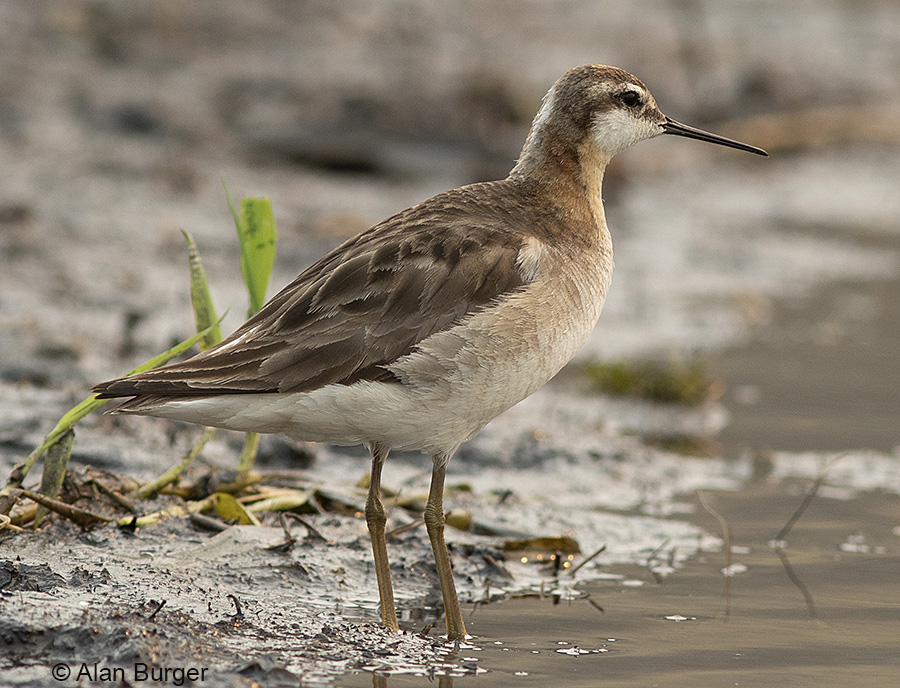
The long thin bill of Wilson’s Phalarope is adapted for picking up tiny aquatic invertebrates. Phalaropes often swim to find food in addition to foraging along the shoreline. 19 July. Photo: © Alan Burger
Gulls are quite rare visitors to Mamit Lake, but in mid- to late-summer one may find one or two stopping off for a feed. Here are two species that we saw on 14 July 2021.
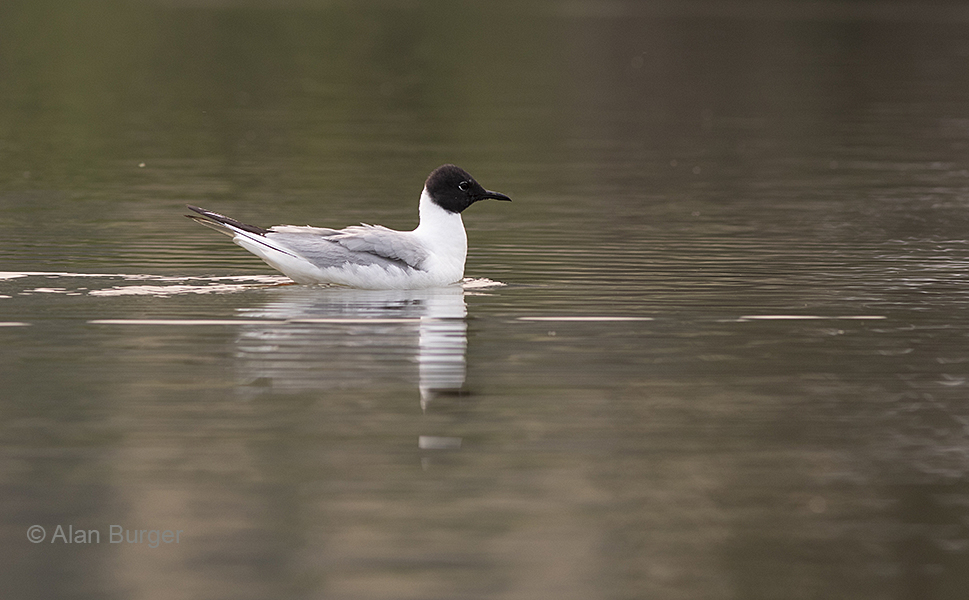
Bonaparte’s Gull in breeding plumage is one of the most elegant of gulls. The adults lose their black head plumage in winter. 14 July. Photo: © Alan Burger
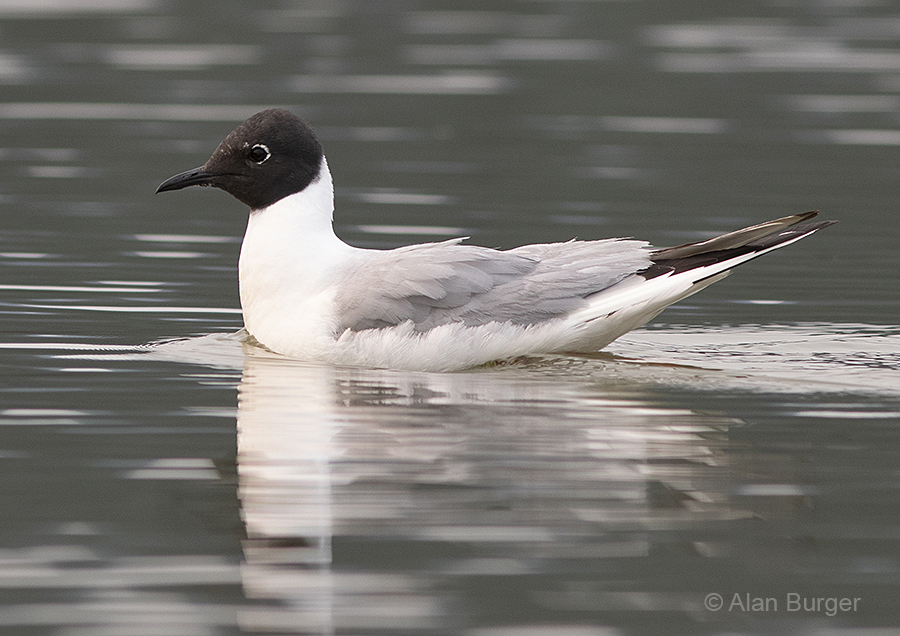
A closer look at the adult Bonaparte’s Gull. 14 July. Photo: © Alan Burger
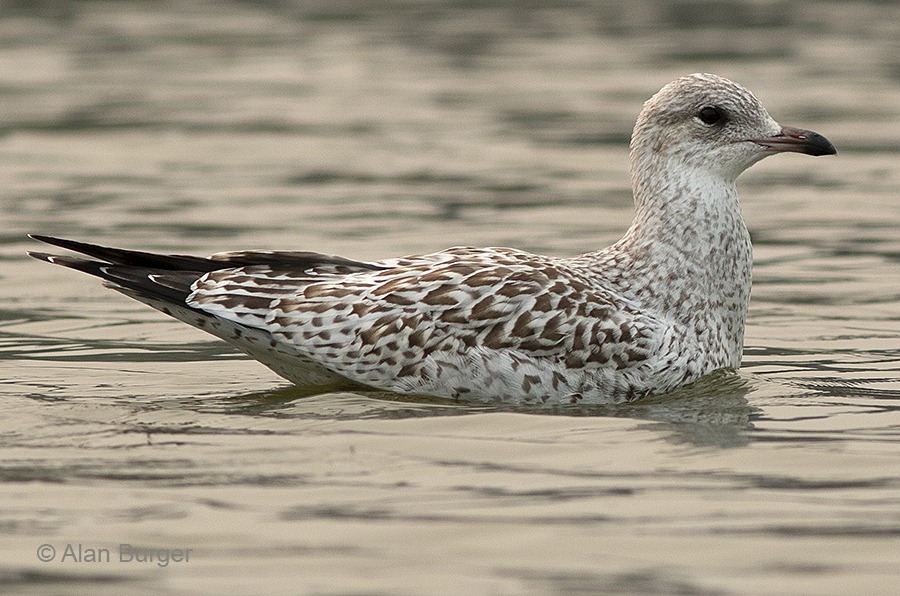
This juvenile Ring-billed Gull has only recently fledged. It likely came from the breeding colony on Shuswap Lake at Salmon Arm. 14 July. Photo: © Alan Burger
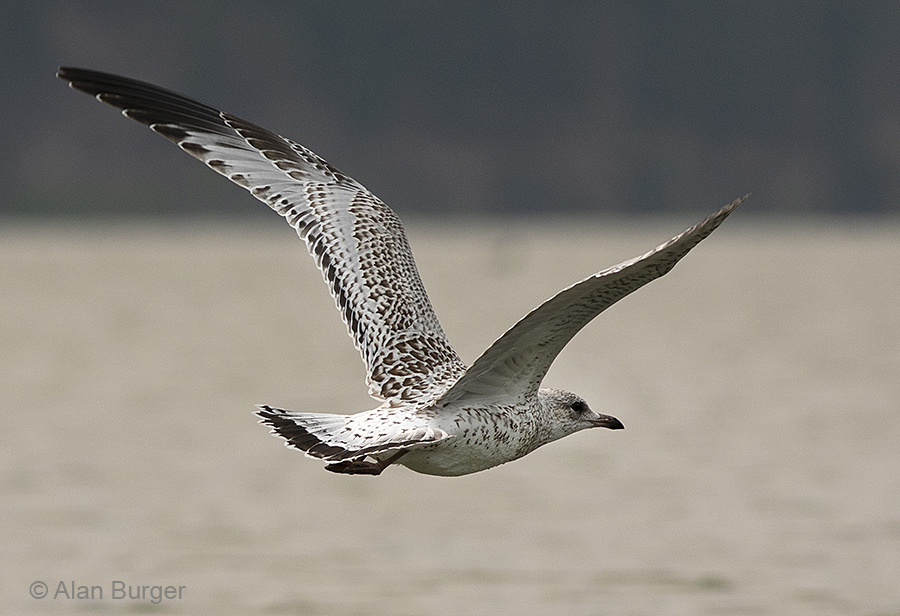
The juvenile Ring-billed Gull taking flight. 14 July. Photo: © Alan Burger
For more photos of Mamit Lake wildlife (in 2020) click here: Mamit Lake August 2020
or here Mamit Lake September 2020
~~~~~~~~~~~~~~~~~~~~~~~~~~~~~~~~~~~~~~~~~
